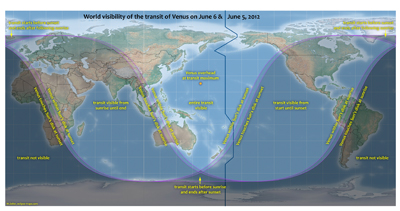View of the partial eclipse of the sun two weeks ago from the Hinode spacecraft. Image by JAXA/Hinode
We’re just recovering from the solar eclipse, but next week planet Earth has some more cosmic events to look forward to, firstly with the lunar eclipse on Monday and then with the transit of Venus between 5-6 June.
OK, let’s get the lunar eclipse out of the way first. A partial lunar eclipse is set for Monday, 4 June. The June full moon will be dipping through the Earth’s shadow early on Monday to produce the first lunar eclipse of the year.
The full moon is set to pass behind Earth at 3am Pacific Daylight Time, before Monday’s sunrise.
So who will be able to witness it? NASA said the eclipse will be visible in North and South America, Australia, eastern parts of Asia and all across the Pacific Ocean.
And, now, moving onto the transit of Venus spectacle that’s coming our way between 5-6 June. Planet Venus will be passing across the face of the sun, producing a silhouette of the distant planet as it traverses the sun as a tiny dot.
The reason why the transit of Venus is being viewed as such an astronomical event is there won’t be another one until 2117!

World visibility map for 5-6 June 2012 for Venus transit. Image by NASA/M Zeiler
So who will be able to experience the transit? The good news is that observers on seven continents, even on a part of Antarctica, will be able to witness the event, according to NASA.
Observers in North America will be able to see the transit on the evening of 5 June, whereas observers in most of Eurasia will be able to witness the transit in the morning on 6 June.
Here in Ireland, DIT, the Dublin Institute for Advanced Studies and Astronomy Ireland, are holding a meet-up for the public at the Martello Tower in Skerries in north Co Dublin to watch the transit of Venus as the sun rises on the morning of 6 June.
Don’t stare at the sun!
But safety-wise, people should not stare at the sun. Venus, as it crosses the sun, will be covering too little of it to block out the sun’s glare.
Astronomers advise that people should wear some type of eye protection, such as a solar filter or even welder glasses.
Transits of Venus have been inspiring scientists and astronomers since the 18th century. They used such transits to learn more about the solar system and the distances between planets.
App makers have even got in on the act. Astronomers Without Borders has teamed up with Transitsofvenus.org to create both web and smartphone apps for the occasion.
Via the Venus Transit phone app, people observing the Venus transit will be able to send their observations to a global experiment to measure the size of the solar system.